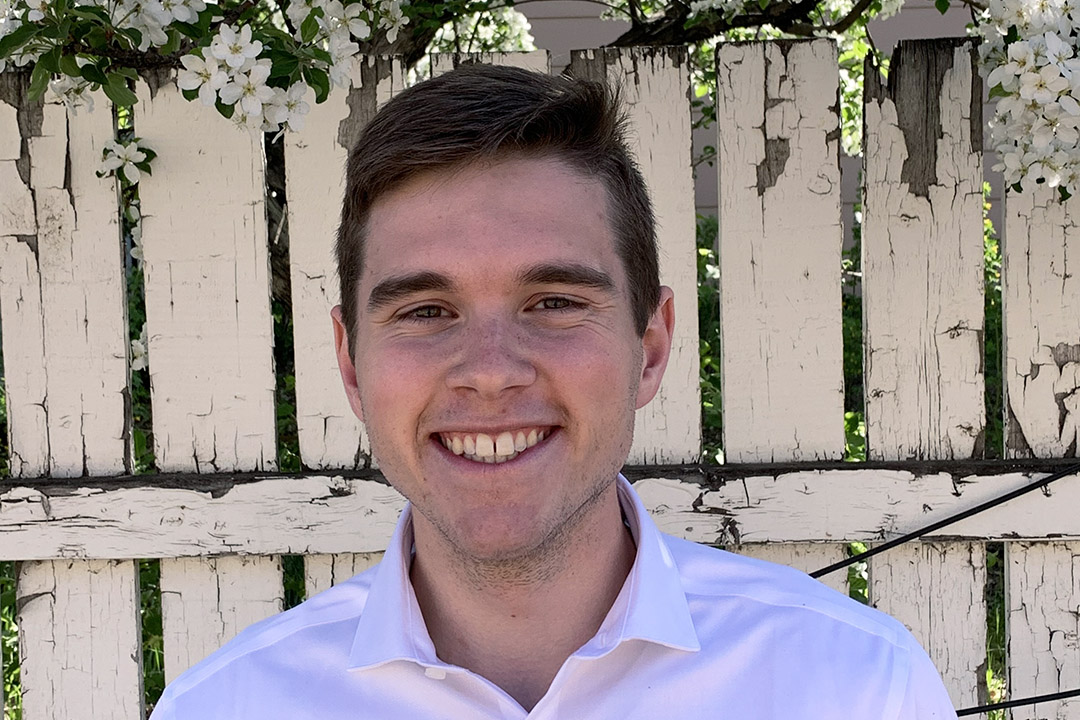
Rohel finds dual degree the best of both worlds
After discovering his aptitude for math and physics in high school, Remington Rohel was up for the challenge of earning a university degree in engineering physics.
By Donella Hoffman“It piqued my interest. I was looking at engineering and at physics and found engineering physics, which was perfect,” he said.
But in first-year university, Rohel discovered another area that fascinated him when he took his first computer science class and was immediately hooked.
“I’d never had any exposure to it whatsoever in high school and I just loved it.”
He found it fun to write code, test it, and problem-solve if it didn’t work.
Ultimately, Rohel chose to pursue a dual degree. He graduated this spring from the University of Saskatchewan (USask) with a Bachelor of Science in Engineering degree in engineering physics and a Bachelor of Science in computer science.
His cumulative average for his undergrad engineering studies is an impressive 94.66, earning him one of the two Governor General’s Silver Medals awarded during USask Spring Convocation. He also received the APEGS (Association of Professional Engineers and Geoscientists of Saskatchewan) Medal, as top graduate in the College of Engineering.
Rohel grew up on his family’s farm near Annaheim, a village about an hour and a half east of Saskatoon, and went to the K-12 Annaheim School where he was one of eight in his graduating class.
On the farm, he saw how his dad would tackle mechanical problems—assessing the situation and using what was on hand to find a solution—and Rohel said he carried that mindset into his university studies.
“My dad is a big influence. He never takes anything into the shop to get fixed, it’s always our shop. He loves working with machines and when something breaks down he always just figures it out for himself,” Rohel said.
“Definitely, I think that lends itself to engineering. When you need to find an innovative solution to an immediate problem, just figure it out.”
Rohel initially chose to go to the University of British Columbia but after a year found it was too far from friends and family, and he missed Saskatchewan’s sunshine.
“I’m definitely not a fan of rain,” he said.
As he pursued his dual degree at USask, Rohel frequently had seven classes per term. But beyond his schoolwork, he found time to play some campus rec sports—volleyball, basketball and badminton—and also spent time as software lead on the team developing the RADSAT-SK cube satellite, which will be Saskatchewan’s first satellite in space. He also participated in the Canada-Norway Sounding Rocket (CanNoRock) program, spending a week in Norway in early 2020.
In future, Rohel said getting a master’s degree isn’t out of the question, and he would like to further pursue his interest in space, but he’s not sure yet what that path looks like.
He currently works at SuperDARN (The Super Dual Auroral Radar Network) Canada, which is headquartered at USask, assisting in the operations and development of radars used to study the ionosphere.
One of his engineering physics professors, Dr. Glenn Hussey (PhD), who’s also part of the SuperDARN team, had suggested Rohel apply for the job, confident he had the diverse skill set it needed: instrument and electronics hardware design interfaced with control software.
“Remington clearly stood out as a bright guy. If you give him a new concept, he can synthesize it and immediately see the bigger picture,” said Hussey, who also noted Rohel’s kindness and willingness to help his classmates.
Dr. Kathryn McWilliams (PhD), director of SuperDARN Canada, said Rohel is well-suited to the diverse work at SuperDARN, which involves anything from designing and building electronics systems, to climbing radar towers at the sites, and from advanced data processing to teaching the next generation of trainees.
“We’re really happy with his technical skills and we’re lucky to welcome him to the team.”

